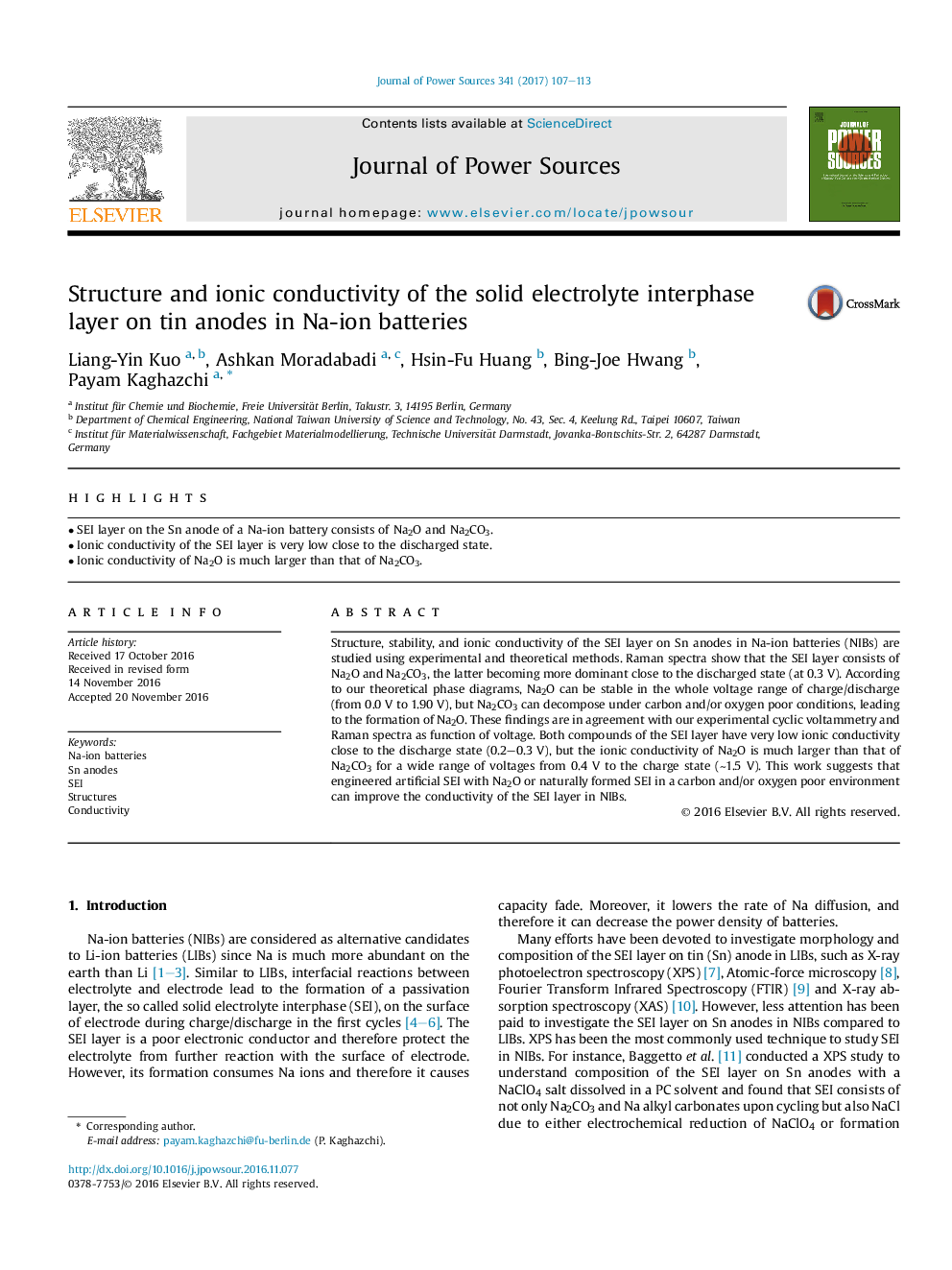| Article ID | Journal | Published Year | Pages | File Type |
|---|---|---|---|---|
| 5149751 | Journal of Power Sources | 2017 | 7 Pages |
Abstract
Structure, stability, and ionic conductivity of the SEI layer on Sn anodes in Na-ion batteries (NIBs) are studied using experimental and theoretical methods. Raman spectra show that the SEI layer consists of Na2O and Na2CO3, the latter becoming more dominant close to the discharged state (at 0.3Â V). According to our theoretical phase diagrams, Na2O can be stable in the whole voltage range of charge/discharge (from 0.0Â V to 1.90Â V), but Na2CO3 can decompose under carbon and/or oxygen poor conditions, leading to the formation of Na2O. These findings are in agreement with our experimental cyclic voltammetry and Raman spectra as function of voltage. Both compounds of the SEI layer have very low ionic conductivity close to the discharge state (0.2-0.3Â V), but the ionic conductivity of Na2O is much larger than that of Na2CO3 for a wide range of voltages from 0.4Â V to the charge state (â¼1.5Â V). This work suggests that engineered artificial SEI with Na2O or naturally formed SEI in a carbon and/or oxygen poor environment can improve the conductivity of the SEI layer in NIBs.
Related Topics
Physical Sciences and Engineering
Chemistry
Electrochemistry
Authors
Liang-Yin Kuo, Ashkan Moradabadi, Hsin-Fu Huang, Bing-Joe Hwang, Payam Kaghazchi,
